
The Aouzou Strip is a strip of land in northern Chad that lies along the border with Libya, extending south to a depth of about 100 kilometers into Chad's Borkou, Ennedi Ouest, Ennedi Est, and Tibesti Regions for an area of 114,000 km2. It is named after the small town and oasis of Aouzou. The region played a significant role in the Chadian–Libyan War.
Operation Épervier was the French military presence in Chad from 1986 until 2014.

The Ouadi Doum airstrike was carried out by French aircraft on 16 February 1986, against the Libyan airbase of Ouadi Doum in northern Chad, during the Chadian–Libyan conflict. The raid was significant in that it demonstrated French resolve to counter Gaddafi's expansionary aims and indicated France's commitment to its former colonies.
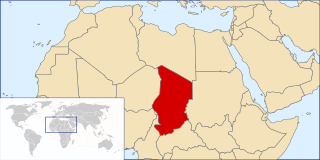
The Chadian–Libyan War was a series of military campaigns in Chad between 1978 and 1987, fought between Libyan and allied Chadian forces against Chadian groups supported by France, with the occasional involvement of other foreign countries and factions.

The Egyptian–Libyan War or the Four Day War was a short border war fought between Libya and Egypt that lasted from 21 to 24 July 1977. The conflict stemmed from a deterioration in relations that had occurred between the two states after Egyptian President Anwar Sadat had rebuffed Libyan leader Muammar Gaddafi's entreaties to unify their countries and had pursued a peace settlement with Israel in the aftermath of the Yom Kippur War of 1973. Soon thereafter Libya began sponsoring dissidents and assassination plots to undermine Sadat, and Egypt responded in kind to weaken Gaddafi. In early 1976 Gaddafi dispatched troops to the Egyptian frontier where they began clashing with border guards. Sadat responded by moving many troops to the area, while the Egyptian General Staff drew up plans for an invasion to depose Gaddafi.
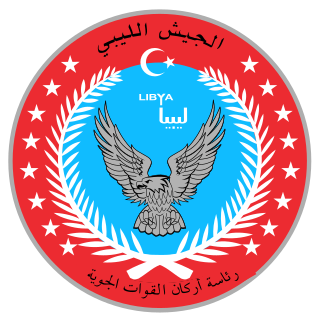
The Libyan Air Force is the branch of the Libyan Armed Forces responsible for aerial warfare. In 2010, before the Libyan Civil War, the Libyan Air Force personnel strength was estimated at 18,000, with an inventory of 374 combat-capable aircraft operating from 13 military airbases in Libya. Since the 2011 civil war and the ongoing conflict, multiple factions fighting in Libya are in possession of military aircraft. As of 2019 the Libyan Air Force is nominally under the control of the internationally recognised Government of National Accord in Tripoli, though the rival Libyan National Army of Marshal Khalifa Haftar also has a significant air force. In 2021, the air force is under command of the new President of Libya, Mohamed al-Menfi that replaced Fayez al-Sarraj.

The Toyota War or Great Toyota War, which took place in 1987 in Northern Chad and on the Chad–Libya border, was the last phase of the Chadian–Libyan conflict. It takes its name from the Toyota pickup trucks, primarily the Toyota Hilux and the Toyota Land Cruiser, used to provide mobility for the Chadian troops as they fought against the Libyans, and as technicals. The 1987 war resulted in a heavy defeat for Libya, which, according to American sources, lost one tenth of its army, with 7,500 men killed and US$1.5 billion worth of military equipment destroyed or captured. Chadian forces only suffered 1,000 deaths.
Hassan Djamous was a Commander-in-Chief of the military of Chad and a cousin of Chadian President Idriss Déby.

Operation Manta was a French military intervention in Chad between 1983 and 1984, during the Chadian–Libyan conflict. The operation was prompted by the invasion of Chad by a joint force of Libyan units and Chadian Transitional Government of National Unity (GUNT) rebels in June 1983. While France was at first reluctant to participate, the Libyan air-bombing of the strategic oasis of Faya-Largeau starting on July 31 led to the assembling in Chad of 3,500 French troops, the biggest French intervention since the end of the colonial era.
The Battle of Maaten al-Sarra was a battle fought between Chad and Libya on September 5, 1987, during the Toyota War. The battle took the form of a surprise Chadian raid against the Libyan Maaten al-Sarra Air Base, meant to remove the threat of Libyan airpower, that had already thwarted the Chadian attack on the Aouzou Strip in August. The first clash ever held in Libyan territory since the beginning of the Chadian–Libyan conflict, the attack was fully successful, causing a high number of Libyan casualties and low Chadian casualties, also contributing to the definitive ceasefire signed on September 11 among the warring countries.

The military history of Libya covers the period from the ancient era to the modern age.
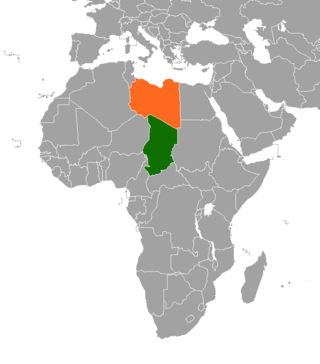
Chad–Libya relations have arisen out of centuries of ethnic, religious, and commercial ties.
Ma'tan as-Sarra is an oasis in the Kufra District municipality in the southeast corner of Libya. It is located in the Libyan Desert, 322 kilometres (200 mi) southwest of Kufra. A marginal oasis, with few palms and substandard water, it allowed the creation in 1811 of the last trans-Saharan caravan route. However, it historically has been little visited by Toubou and Zaghawa nomads.

The Chadian Civil War of 1965–1979 was waged by several rebel factions against two Chadian governments. The initial rebellion erupted in opposition to Chadian President François Tombalbaye, whose regime was marked by authoritarianism, extreme corruption, and favoritism. In 1975 Tombalbaye was murdered by his own army, and a military government headed by Félix Malloum emerged and continued the war against the insurgents. Following foreign interventions by Libya and France, the fracturing of the rebels into rival factions, and an escalation of the fighting, Malloum stepped down in March 1979. This paved the way for a new national government, known as "Transitional Government of National Unity" (GUNT).
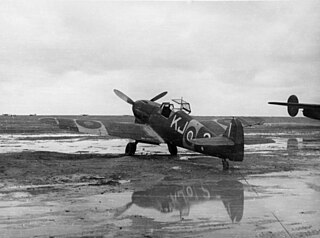
Martuba Airbase is a Libyan Air Force base in the Derna District of Libya, located approximately 27 kilometres (17 mi) south-southeast of Derna, and 268 kilometres (167 mi) east-northeast of Benghazi.

Ghardabiya Airbase is a dual-function airbase for the Libyan Air Force 15 kilometres (9.3 mi) south of the Mediterranean coastal city of Sirte. It also incorporates an airport for civilian use.
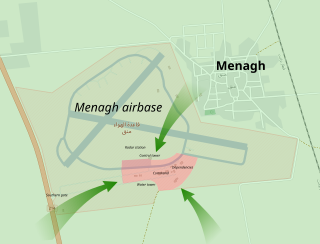
The siege of Menagh Air Base was an armed confrontation between the Free Syrian Army and aligned Islamist rebel groups on one hand, and the Syrian Armed Forces on the other.
The Battle of Aouzou refers to a pair of battles fought between Chad and Libya in and around the town of Aouzou (Chad) in August 1987, as part of the Toyota War, the last phase of the larger Chadian–Libyan conflict. The first battle resulted in a Chadian victory, while the second battle, a Libyan counteroffensive, is deemed to have been won by Libya. It was the only Libyan victory of the Toyota War.
The Battle of B'ir Kora was a military engagement during the Toyota War. Fought between the Libyan army and the Chadian FANT on the morning of 19 March 1987, the battle saw the Chadians encircle and destroy several Libyan units.

The Chad–Libya border is 1,050 km in length and runs from the tripoint with Niger in the west, to the tripoint with Sudan in the east.















